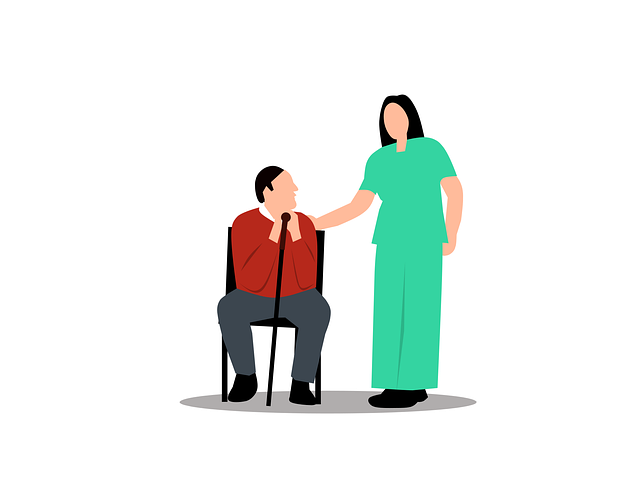Tips for Supporting Caregivers

Sept. 21, 2023
You can give your chronic lung disease patients the best care possible while they are in the hospital. You can teach them how to use their inhalers and take their medications when they get home. Your discharge planning process can be state-of-the-art.
But if you fail to turn enough attention to the informal caregiver or caregivers who will be overseeing your patient’s care when they go home, that patient could be back in a hospital bed before you know it.
Three RTs who have a long history of working with chronic lung patients and their families have some great advice when it comes to caring for the caregivers.
See it from their perspective
It starts with standing in their shoes for a moment to see what they’re facing.
“I think there are things we do as RTs on a daily basis that seem so simple to us because we do them often but are not simple for patients and caregivers to understand,” said Debbie Koehl, MS, RRT, manager of pulmonary rehabilitation at IU Health Methodist in Indianapolis, IN. “We think oxygen and nasal cannulas are easy peasy. Well, at home they may not be and there is a lot that can go wrong.”
She recalls having oxygen delivered to her home when her mother-in-law was on hospice and how dismal the instruction was in how to use it. “It’s a good thing I was there and understood how everything worked because the education given to us was not complete or effective for the non-hospital family to understand,” she said.
Kim Wiles, BSRC, RRT, CPFT, FAARC, vice president of respiratory services for Allegheny Health Network Home Medical Equipment in New York, agrees, noting that when working with patients in the home, it is important to focus as much on the caregiver’s understanding of the education being delivered as the patient’s.
“In many cases, if the patient isn’t able to care for themselves, they are the ones who will be responsible for providing care,” she said. “They are the ones who need to understand the importance of the therapy so they can provide encouragement to comply with physician’s orders.”
Mary Hart, MS, RRT, AE-C, FAARC, FCCP, who is now an independent consultant but has years of experience working with chronic lung patients at Baylor University Medical Center in Dallas, TX, says caregivers are a big part of a patient’s life, but sometimes aligning their wants and needs can be difficult.
“When a patient is newly diagnosed, caretakers tend to want to do everything for the patient. It is not necessary nor realistic for that to occur,” she said. “Sometimes, patients just want someone to talk to and be there for them — not do everything for them.”
She believes many patients want to be as independent as possible, and for a caregiver to try to do everything alone is both frustrating and unhealthy for caregiver and patient alike.
Challenges are many
What are some of the challenges these informal caregivers face? These therapists say the list is long.
Kim Wiles points to the sheer enormity of the job, especially when the patient isn’t the only person needing care from the caregiver — they may have children or other family members who need their assistance too. It can all become overwhelming.
“They end up with very little time for themselves,” she said. “Caregivers who have been providing care for a while may become burned out.”
Caregivers often don’t ask for help, either, instead trying to push through the situation on their own because they don’t want to burden anyone else or they don’t really know where to turn for the resources they need to cope. Wiles says that leaves them feeling defeated and isolated.
When the patient balks at following the plan of care, it falls to the caregiver to try and enforce it, and that can lead to animosity.
Koehl agrees making sure the patient follows all of the recommendations from their care team is challenging, and says many informal caregivers have a hard time keeping up with all the appointments the patient has as well. It all adds up to a big emotional burden.
“Having all the responsibility fall on them” is tough, she said.
According to Hart, some caregivers have medical issues of their own, and trying to care for a loved one and yourself at the same time can be exhausting. They also may not fully understand their loved one’s condition or the best ways they can help, and if they don’t have family around or access to other assistance on a daily basis, things can quickly fall apart.
“People tend to be more positive and successful caregivers when they know how to help, where to get the help and support they need, and have learned to maintain a healthy balance in life,” she said. “Having a social network helps.”
Here’s what you can do
What can RTs do to help? Debbie Koehl, Kim Wiles, and Mary Hart offer these great tips for helping caregivers do the best job they can for their loved ones.
- Listen to their concerns and answer all their questions.
- Provide clear education on their loved one’s condition, including signs and symptoms and what constitutes an exacerbation and how to prevent it.
- Make sure the caregiver understands the patient’s medications and devices, breathing techniques, airway clearance devices, oxygen, nutrition, and any other aspect of care.
- Direct them to reliable online educational sources that can reinforce that teaching, such as free resources available from the COPD Foundation and other organizations, including the AARC, which has an excellent booklet on aerosol delivery devices geared especially for patients and caregivers.
- If the patient is eligible for pulmonary rehabilitation or a Better Breathers Program, encourage the caregiver to convince the patient to take advantage of it.
- Make sure they have all the resource phone numbers they need to reach out to agencies or other entities that can help them care for their loved one at home, such as home care companies, etc.
- Recommend additional support services that may be available to keep their loved one safe and comfortable in their home, such as walkers, bath safety, fall safety, etc.
- Help them find caregiver support groups that can show them they aren’t alone and respite programs to give them some time off from their caregiving duties.
- Look for signs of burnout and educate the caregiver on when and where to seek help.
RTs can make a difference
Debbie Koehl believes RTs in every setting can help caregivers decrease their stress and anxiety by making sure they have the resources and support services they need. “If the caregiver is more relaxed and has a feeling of support and feels confident in how they are helping, it would allow for better care for the patient,” she said
As a therapist who has long worked on the home care side of RT, Kim Wiles stresses the need for caregivers to have 24-hour access to an RT as well, particularly if they are on some form of home ventilation. “RTs provide the detailed education so that the caregiver feels confident in providing care,” she said. “Having access to the RT 24 hours per day gives them another level of security.”
Mary Hart encourages therapists to share their patient/caregiver experiences with other members of the health care team and she also believes it is important to let caregivers know how they can advocate for their loved ones on the larger stage.
“Encourage caregivers to get involved as advocates — city, state, national,” she said. “We all need to learn from each other and hear directly from patients/caregivers to understand real world needs.
Debbie Koehl, Kim Wiles, and Mary Hart recently took part in the AARC Respiratory Patient Advocacy Summit. Held virtually this year on June 13 and 14, the Summit was attended by RTs, patients, and caregivers who learned more about key topics of interest to people living with lung disease and their families.
Email newsroom@aarc.org with questions or comments, we’d love to hear from you.
















